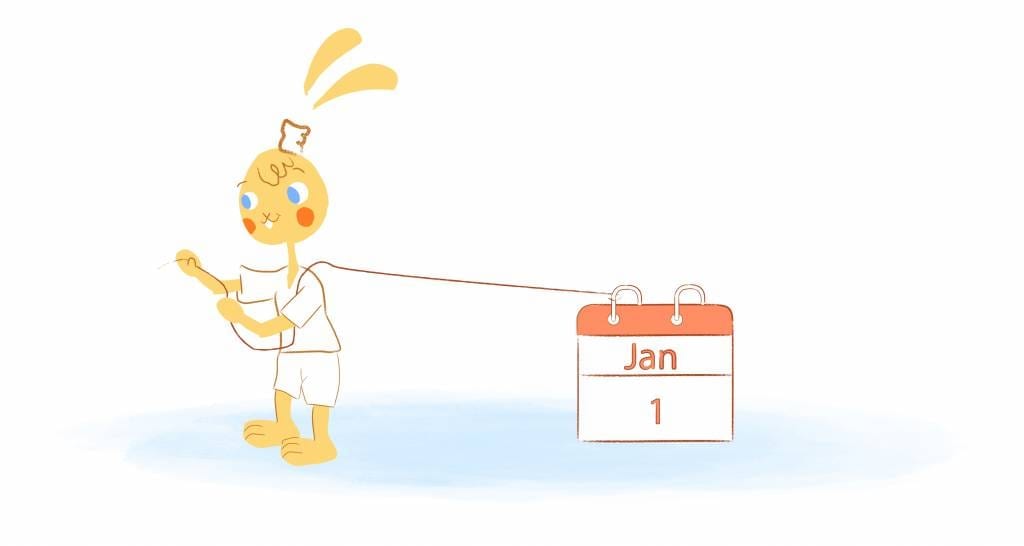

All of us have experienced that 30-minute task that morphed into a full-day project. After all, without time constraints, work can easily drag on throughout the day. This phenomenon is known as Parkinson’s Law, which says “work expands to fill the time available for completion.”
Thankfully, you can regain control of your schedule by timeboxing. When you use timeboxing to manage your work, you can overcome procrastination, regain lost productivity, and focus on the work that matters. Ultimately, the goal of timeboxing is to spend less time planning work and more time working.
What is Timeboxing?
By timeboxing, you allocate a set amount of time to a specific task on your calendar.
Instead of just working until something is done, you decide when and how much time you will dedicate to it. To put it another way, timeboxing means scheduling a specific amount of time for a particular task in your calendar.
Basically, it’s the same as scheduling a meeting. You pick the day, as well as the start and end times. And most importantly, you reserve time in your calendar to avoid calendar conflicts.
Once you reserve a slot time, you should treat it like an appointment. If you work on a time-boxed task, you will not be interrupted by reschedulings or distractions.
In the case of larger tasks, you may need to reserve several blocks of time ahead of time. You can effectively schedule and prioritize your time with this approach.
“Timeboxing will change your life,” explains Nir Eyal. “It works because it uses well-researched technique psychologists call, ‘setting an implementation intention,’ which is just a fancy way of saying, ‘planning out what you are going to do and when you will do it.'”
No wonder leaders like Bill Gates and Elon Musk have sung the praises of timeboxing.
The Pros and Cons of Timeboxing
Timeboxing has several advantages. Among the main benefits are:
- You’ll be more intentional about your work. Creating a timebox requires prioritizing tasks and deciding how long they should take. The more you think about these details for every task, the more aware you are of where your time is going.
- It is easier to “force yourself” to tackle those tasks you have procrastinated on or that you know you will struggle with.
- Setting strict limits on when and how much time you will spend on a particular task will help you organize your schedule more effectively. In addition, you’ll be more productive and focused if you don’t get interrupted or distracted while working on your task.
- Reduces multitasking. The human brain is incapable of multitasking. The brain must re-upload information every time we switch tasks, which takes energy and time. When you timebox, you focus on one task (or a related group of tasks) at a time. This way, you won’t jump between projects.
- It helps you manage perfectionism, overprocessing and overdoing.
- Establishes a routine. You can gain a better understanding of your day by timeboxing. When you schedule your timeboxes in your calendar, you can clearly see when each task will be completed. When you schedule your work in advance, you will be less likely to get caught up in the “guessing game” of scheduling and can approach each day more confidently.
The disadvantages of timeboxing.
Although timeboxing has many benefits, it isn’t for everyone. Listed below are some of the most common drawbacks of timeboxing and some ways to overcome them.
- You can’t finish your task before the timebox is up. When first starting out, this is a common issue with timeboxing. However, if you track your time over time, you’ll more accurately estimate the time needed to complete specific tasks.
- Timeboxing disrupts my flow. It can be frustrating when you have to switch tasks when the timer goes off. This is why grouping similar tasks into back-to-back time boxes is recommended.
- By timeboxing, I rush through tasks, resulting in low-quality work. When establishing a timebox, be realistic. You shouldn’t force every ounce of productivity out of time management techniques like timeboxing. If you try that, you will burn out instead of succeeding. Instead, keep your expectations realistic and schedule downtime between tasks to prevent burnout.
- My calendar is a bit cluttered after adding all of my timeboxes. Taking control of your calendar is possible with timeboxing. But this time management strategy is not for everyone. Another time management strategy, such as time blocking, might help you if you’re feeling overwhelmed.
How Timeboxing and Timeblocking Differ
When you use time blocking, you schedule a time to accomplish everything on your agenda, everything you might otherwise be unable to accomplish.
Time blocks, also called time periods, refer to shorter time periods that can be marked on your calendar and dictate starting and ending times for activities. Each time block is intended to motivate you to help you follow your schedule and complete your work on time.
Then you assess whether you completed the task before the end of the time block. If not, you allocate more time for the next attempt.
How is timeboxing different?
When you timebox, you limit activities to avoid wasting too much time.
The timeboxing process involves creating time periods called “timeboxes,” which can range in length from a few minutes to several months. In addition to deadlines and goals, timeboxes may also include milestones, deliverables, and a budget.
Regardless of the outcome, you declare your work done at the end of the timebox. After that, you assess whether or not you have reached your goals.
For example, you might want to clean up your office without spending the whole afternoon doing so. Whenever your 30-minute timebox runs out, you stop immediately, regardless of how much cleaning you’ve done.
Getting Started With Timeboxing
Are you interested in giving timeboxing a try? Here are nine pointers to get you started on your journey.
1. Identify appropriate tasks.
The general rule is to assign a timebox to any task you want. However, setting timeboxes for the following would be most helpful:
Those tasks you don’t want to do.
In most cases, these are time-consuming and demanding tasks, such as writing an eBook. As a consequence, your procrastination is the result of knowing you cannot complete these tasks quickly.
If you break up your work into smaller, more manageable chunks with their own deadlines and milestones, you make the task seem less daunting. Then, to reach the next one, you only need to motivate yourself.
The tasks you want to complete as quickly as possible.
Cleaning your bathroom or arranging your emails are two examples of necessary but unpleasant tasks. These tasks will either take a long time to complete or consume too much of your time.
A strict deadline will limit the time you’ll spend on the project from the get-go.
2. Differentiate between hard and soft timeboxes.
To clarify what you should do after each timebox, distinguish “hard” timeboxes from “soft” timeboxes:
- Soft timebox. A soft timebox can be thought of as a group of smaller tasks you’ve broken down into larger ones. After completing one timebox, you move on to the next timebox. You can keep track of your work with symbolic milestones, which will help you parse it more effectively and make it easier to manage.
- Hard timebox. A hard timebox is one you won’t think about once it’s over. You move from one completely unrelated timebox to the next as soon as you finish one. As your focus shifts to a different type of task, milestones become more apparent.
3. Make timeboxed time a priority.
You may find it tempting to rearrange, reschedule, or cancel your timeboxes when you have a busy day. Keep this to a minimum. When you have established your timeboxes, think of them as self-scheduled meetings instead of going with the flow.
By setting aside time for a specific task, you are committing to yourself that you will complete it during that time. Therefore, Timeboxes shouldn’t be canceled at the last minute, just like you wouldn’t cancel a meeting at the last minute unless absolutely necessary.
4. Visualize your time.
The best way to timebox is to make it visually appealing. To see what time limit you have on any particular task, it helps to schedule focus time on your calendar. In addition to helping you stay on schedule, it also lets others know when you will not be available.
5. Set a limit on the timebox.
How long should a timebox last if it’s realistic?
According to the widely discussed science of ultradian rhythms, you should never allocate more than 90 minutes to any task in one sitting.
The amount can, however, be reduced. For example, feel free to set a five-minute time limit for brainstorming tasks that will take about five minutes.
It’s entirely up to you how long your timeboxes are and how many tasks you’ve got to accomplish. But, regardless of the timebox length, taking a break after 90 minutes is always a good idea.
6. Take breaks between timeboxes.
Breaks help you stay focused longer. Again, science shows that your attention begins to wane after 90 minutes, but it might wane much earlier. To keep your routine smooth, you must plan ahead for breaks.
It is possible, for example, to work for 45 minutes and then take a 15-minute break. This will give you a full hour.
Also, you should make the most of these breaks. I recommend taking a break during your break time to let your eyes rest, primarily if you work all day in front of a computer. Try stretching or taking a short walk outside instead.
As soon as you return, you’ll have regained your focus and concentration, just in time to work for another 45-minute timebox.
7. Set timers.
As soon as you’ve assigned time to each task, set a timer to remind you when it’s time to move on to the next one. You will not only be motivated to work efficiently if you set a specific period of time. But you will also ensure you don’t leave out other important projects as well.
8. Similar tasks should be grouped together.
It is best to create individual timeboxes for most tasks and initiatives to timebox effectively. This is because it takes time and mental energy to switch between tasks, even with timeboxing. Therefore, tasks should be grouped in adjacent timeboxes to avoid this problem. By doing this, your brain will stay on the same “track” even while you work on individual projects.
In other words, even if you switch timeboxes, grouping similar tasks will make it easier for you to stay focused and flow.
9. Review, rinse, and repeat.
Review your progress at the end of every timebox or day. Can you learn anything and apply it to your future schedules if you complete all your tasks?
If not, ask yourself why. Did you allow enough time for the task to be completed? What distracted you or derailed you?
Image Credit: Stas Knop; Pexels; Thank you!











John Hall
John Hall is the co-founder of Calendar a scheduling and time management app. He’s also a keynote speaker that you can book at http://www.johnhallspeaking.com.